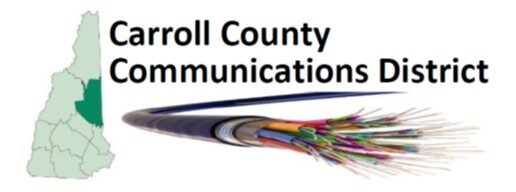Understanding Broadband Offerings: Benefits and Limitations
- Fiber Broadband – (Local vendor: NH Broadband (NHEC) and Fidium) Fiber broadband uses thin strands of glass or plastic to transmit data as light signals, providing a cutting-edge connection that’s known for its speed and reliability. It’s an excellent choice for those who need high-speed internet for streaming, gaming, working from home, and more. However, its availability and cost might be limiting factors for some users.
-Benefits:
- High Speeds: Fiber offers some of the fastest internet speeds available, often up to 1 Gbps or more.
- Reliable Connection: Unlike other connections, fiber is less affected by weather or other interference.
- Symmetrical Speeds: Upload speeds are often as fast as download speeds, great for video conferencing and uploading large files.
-Limitations:
- Availability: Fiber may not be available in all areas, especially in more rural locations.
- Cost: Often more expensive than other broadband options due to the technology involved.
- DSL (Digital Subscriber Line): (Local Vendor: Consolidated) DSL uses traditional telephone lines to transmit digital data. It operates over the same lines used for landline phones but doesn’t interfere with voice calls.
- Benefits:
- Widely Available: Often available in rural areas. Uses phone lines.
- Dedicated Connection: Your connection isn’t shared with neighbors.
- Less expensive
- Limitations:
- Slower Speeds: Slower than cable or fiber. Often too slow to stream video. Poor choice for video conferencing, like Zoom.
- Distance Matters: The further you are from the provider, the slower the speed.
- Cable Internet: (Local Vendor: Spectrum/Charter) Cable broadband utilizes the same coaxial cable lines that deliver cable television, transmitting data through electrical signals.
- Benefits:
- Faster Speeds: Much faster than DSL.
- Bundling Options: Can be bundled with TV and phone services.
- Limitations:
- Shared Connection: Speed may decrease during peak hours.
- Limited Rural Availability: May not be available in remote areas.
- Fixed Wireless: (Local vendor Hub66) Fixed wireless provides internet access using radio signals rather than cables. A small dish or antenna communicates with a tower, which is connected to a wired internet infrastructure.
- Benefits:
- Rural Access: Good for areas without cable or DSL.
- No Phone Line Needed: Doesn’t require a landline.
- Limitations:
- Weather Dependent: Bad weather can affect the connection.
- Line of Sight Required: Needs a clear path between the antenna and the tower.
- Cellular Home-Based Wireless: (Local vendors: Verizon, AT&T, T-Mobile) Cellular home internet utilizes the same wireless networks that mobile phones use. It connects to the internet through local cellular towers, converting cellular data into Wi-Fi for home devices.
- Benefits:
- Portability: Can be used anywhere with a cellular signal, making it flexible and convenient.
- No Physical Cables: Doesn’t require traditional phone or cable lines.
- Quick Setup: Often as simple as plugging in a device and connecting.
- Limitations:
- Data Caps: Many plans have limits on data usage, which can lead to extra charges or slower speeds.
- Dependent on Cellular Coverage: Quality and speed depend on the strength of the cellular signal in your area.
- Potentially Slower Speeds: May not offer the same high speeds as cable or fiber, especially during peak times.
- Satellite Broadband: (local vendor: Starlink) Satellite broadband connects to the internet via satellites in orbit. A dish installed at the user’s location communicates with the satellite, which is linked to a ground station connected to the internet.
- Benefits:
- Available Anywhere: Even in very remote areas.
- Improving Speeds: Newer technology is increasing speeds.
- Independence from Ground Infrastructure: Not reliant on cables or towers.
- Limitations:
- Latency Issues: There may be a slight delay in the connection.
- Weather Sensitive: Storms can disrupt the signal.
Conclusion:
Choosing the right broadband option depends on where you live and what you need from your internet connection. Here’s a quick summary:
- DSL and Cable: Good for most users but check the availability and speed in your area.
- Fiber: Fastest speed and symmetrical, but limited availability and can be more expensive
- Fixed Wireless: A solid option if you’re in a rural area without cable or DSL.
- Cellular Home-Based Wireless: Great for portability but watch out for data limits.
- Satellite: The go-to option for very remote areas but be aware of potential delays and weather sensitivity.
Talk to local providers, neighbors, or family members who understand your needs and location to find the best option for you. Remember, technology is always advancing, so it’s worth checking every so often to see if new options become available in your area.
